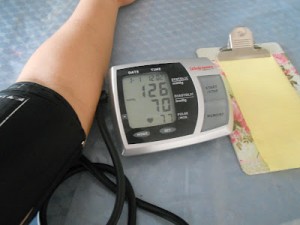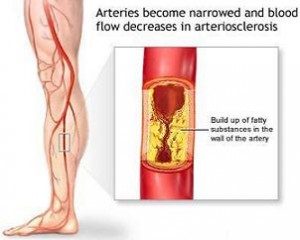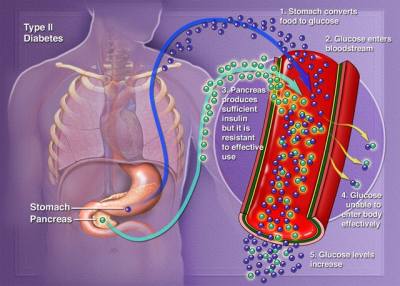This article is about “get rid of toxins safely”. You often hear that people use chelation at home with natural foods. Is that true?
The standard chelation detoxification
I like to mention in the beginning that the proven way to reduce heavy metals in the blood (typically mercury and lead) is by intravenous chelating agents such as EDTA. However, the lowering of calcium levels as a severe side effect limits the application of it. There are also blood-thinning side effects to consider. EDTA is a chemically synthesized compound, not a natural substance. Conversely, vitamin C and Glutathione are both antioxidant substances that the body knows; they are non-toxic and can be used more easily intravenously to remove heavy metals like lead and mercury with fewer side effects than EDTA.
Natural ways to use chelation in order to detoxify
Although I think that EDTA has a place in the hands of those who are knowledgeable about the side effects, the vitamin C/Glutathione combination is probably a more physiological detoxification method as glutathione is synthesized by the liver to detoxify our bodies. Intravenous chelation is expensive, requires access to a vein and may not be a suitable way for many people to detoxify. There are natural ways to detox for those who cannot afford chelation or cannot chelate for other health reasons. The major detoxification organs are: the liver, the kidneys, the gut, the lungs and the skin.
What about oral methods to detoxify?
Several methods of cleansing are fasting, the major cleanse or the raw food cleanse. I would not advise to do strict fasting without fluid intake as it takes fluid intake to be able to dissolve any released toxins into urine, feces, invisible fluid from exhaled air and nasal discharge. Next there is the “master cleanse” with lemon juice, maple syrup and cayenne pepper as indicated in the link above. Some people like trendy procedures that they find in a magazine or in a self-help book. I do not like it, as it reminds me too much of a cookbook approach.
A Vitamix is a good tool to create turn your fruit/vegetables into a chelating tool
I feel differently about a raw food cleanse as I will explain. First, I like to point out that raw food is not easily digested as your gut absorbs only about 30 to 40% of the nutrients. The cell walls of the vegetables you use are the barrier towards absorption. This is much different, if you put the raw fruit and vegetables into a blender with a high-power motor. (There are several brands like the BlendTec or the Vitamix.) The powerful blending process breaks up the cell walls and releases the content of the plant cells including their enzymes and nutrients, so that 80% of the nutrients are absorbed in your gut.
If you use organic ingredients (they do not contain toxins, artificial fertilizer residues etc.) you cannot go wrong! Use spinach, kale, banana, mango, greens, lemon juice, and for fat add some nuts like walnuts, Macadamia nuts, almonds (with the proviso that you are not allergic to them). With the help of a powerful blender all this will turn into a liquid drink that actually tastes OK. For protein supplementation I would also add some protein supplement like vegan protein from the health food store, whey protein or egg white protein (good to rotate these protein supplements). This mix is a complete nutritional program as it contains complex carbohydrates from fruit and vegetables, fat from nuts, protein from the protein supplement and fiber (from the whole vegetables and fruit).
Natural detoxification from organic fruit and vegetables
You will not get hunger pangs as with a fast or the master cleanse. Use the signs of your body as guidance. If you feel energized after 5 days, stop then and return to your normal food intake. This is a zone type diet, a Mediterranean diet or South Beach diet as explained below. Some people have the willpower to do 7 to 10 days of the liquid diet described. Good for them, at least they do not starve themselves as the calories and total nutrient content are there while they detoxify. What are the agents that lead to the detoxification process? The enzymes from the fruit and vegetables, the lack of toxins as you only consume organic ingredients, the extra vitamin C from the food and the glutathione from your liver are all working together for detoxification.
Are there supplements that can help you to detoxify?
Chlorella powder, which you can buy in health food stores, is one of the few supplements that can detoxify your body from heavy metals. As Dr. Mercola describes that in Japan chlorella powder is one of the most popular supplements to detoxify. It is difficult to get a complete, non-biased picture about chlorella. I did an extensive research in MD Consult about the scientific evidence for detoxification by chlorella in humans. Unfortunately, the search results came back only for experiments with mice and rats, but there were no human detox results.
Chlorella detoxification
Perhaps the Wikipedia description about the history of algae and chlorella as a possible food supplement sheds some light on the difficulties getting real hard data on chlorella detoxification. Researchers poisoned rats deliberately with cadmium (a heavy toxic metal). There was no evidence of detoxification with chlorella when the researchers stopped cadmium poisoning. However, the article goes on to say that chlorella did prevent absorption of cadmium from the intestines to a certain extent (in rats).
Liver detoxification and colonic detoxification
Dr. Max Gerson invented coffee enemas many years ago when he treated end stage cancer patients with natural methods. He found that when he detoxified them with raw juices, many cancer patients died from the toxic breakdown products of dying tumor cells. So he was in dire need of a procedure that would remove the toxic tumor substances efficiently. This is when Dr. Gerson used coffee enemas. As the link above describes, coffee given through the colon as an enema (we would perhaps call it “coffee colonics” today) stimulates the liver and the bile flow thus detoxifying the blood effectively of toxic materials. In addition, the secretory capability of the large surface of the colon wall also helps the detoxification process. Juicing in combination with coffee enemas improved Dr. Gerson’s end stage cancer cure rates dramatically.
Dr. Kelley introduced supplementation with Mega pancreatic enzymes
Subsequently, Dr. Kelley developed his nutritional-metabolic therapy for end stage cancer patients where he added large amounts of pancreatic enzymes in addition to coffee enemas. Dr. Denis Burkitt is credited for recognizing the importance of fiber in the diet. He noticed that there was a striking difference between the colon cancer rates in England versus the rates in Africa. He analyzed food habits in both locations and found that in England there was not enough fiber consumption.
Diet high in vegetables, fruits and whole grains reduces colon cancer rates
A large study done by the Harvard Medical School showed that it was not so much the fiber that helped to prevent colon cancer. Further large scale studies were done and it was shown that a diet high in vegetables, fruits, and whole grains was what was responsible for a reduction in colon cancer rates. This type of diet will also help detoxify your system from carcinogenic substances in general and from other toxins as the soluble fiber inside the gut will attach to it and go down the toilet instead of being reabsorbed in the colon into your system causing cancer.
Skin detoxification
The skin is the largest body organ with a lot of skin surface where skin pores can help detoxify under the right circumstances. You can achieve this with infrared saunas, with exercise that leads to production of sweat and by soaking in Epsom salt baths. Traditionally this has been done for centuries in the European spas, originally described by Sebastian Kneipp. The medical establishment in Europe (France, England, Germany, Austria), unlike American physicians, embraced the concept of natural therapies under the term “balneology”, at least for a number of decades. But overuse by patients (abusing the system), badmouthing the relatively weak effect of detoxifying by Big Pharma and lack of funds from the health insurance companies put a damper on his movement. Part of this approach was the use of skin detoxification with healing baths (using Epsom salt and other salts) and physical exercise to the point of sweating.
Wechselbäder according to Sebastian Kneipp
In addition, “Wechselbäder” according to Sebastian Kneipp (alternating hot and cold baths) are also useful to stimulate the circulation and the immune system. The major component of Epsom salt is magnesium sulfate, which can be absorbed through the skin to a certain degree. So, some of the healing effect of Epsom salt baths may have come from an indirect balancing of low blood magnesium and the normalization of many metabolic processes that require magnesium as cofactors. Here is another, more vernacular description of Epsom salt use. Some of the assumptions such as improvement of diabetes, improvement of digestive absorption or relief from migraine headaches may be a combination of exaggeration and placebo effect rather than reality.
Kidney detoxification
The kidneys along with the liver are the major, natural detoxification organs of the body. However, they need enough fluids to dissolve water-soluble toxins and eliminate them from the body through the urine. Consume clean water intermittently during the day (reverse osmosis water in glass bottles or BPA free bottled water). Because alcohol is a cell poison damaging the vital organs like the brain, heart, liver and kidneys it is best to minimize any alcohol intake to the absolute minimum (best to avoid alcohol altogether). The main filtration devices in the kidneys are the glomeruli, little packages of convoluted capillaries, which filter the blood several times per day.
Too much salt and sugar interfere with normal glomerulus function
High salt intake, too much sugar and too much starch interfere with normal function of the glomeruli. Insulin resistance in cases of metabolic syndrome and diabetes (often in people with obesity) can damage the kidneys. In this case the filtration devices of the kidneys suffer damage and cause toxin accumulation. To prevent damage of the kidney capillaries you need a healthy, basic diet like the Zone diet, South Beach diet or the Mediterranean diet as mentioned in this link.
This will keep fat deposits out of your arteries and maintain the capillaries of the glomeruli of your kidneys. This means that the filtration process continues to work until a ripe old age. Your doctor can order tests (creatinine clearance) to assess whether the filtration capacity of your kidneys is normal.
Many toxins are fat-soluble
Many toxins are fat-soluble and store in the fatty tissues. When you lose weight, you need to drink more fluids to get rid of the water-soluble toxins. This occurs through the kidneys. You can also use coffee enemas to rid yourself of fat-soluble toxins (through bile and bowel movements).
There are a lot of websites that want to sell you herbs that should cleanse your system. They have a marginal effect. But I like to stress that you want to adopt one of the diets mentioned above first. This starts you with a healthy baseline. Such herbs as Buchu (Agathosma Betulina), Burdock, Echinacea and Yellow Dock Root (Rumex Crispus) are supposed to help the kidneys to detoxify. I am not certain whether there is medical proof for this.
Conclusion
Detoxification starts with adopting healthy food and lifestyle habits first. A low carb, low fat type diet (zone diet, a Mediterranean diet or South Beach diet) are essential. They are the footing from which the other detoxification methods work. Some of the toxins will leave you when you work out and sweat. More will leave you when you enjoy an Epsom salt bath. This gives you some extra magnesium, which in turn detoxifies your system. The detoxification takes place through several biochemical reactions where magnesium is a cofactor. Colonics or enemas will help remove toxins through your colon and they are more effective when coffee enemas are used (stimulation of your liver through the splanchnic nerves).
Infrared saunas
Infrared saunas can help to mobilize toxins and detoxify them through your skin. Take ample amounts of fluids as this will help remove some toxins through the kidneys and the urinary system. If the physician detects major heavy metal poisoning, the traditional intravenous chelation treatments are more recommendable. A naturopathic physician or A4M physician (anti-aging physician) could advise you what is best in your case. Overall the thought is that by removing toxins the mitochondria in our cells will work more efficiently. They are particularly concentrated in the brain, heart, liver, and kidneys. When they work more effectively they give you more energy and prevent major diseases. These diseases are cancer, cardiovascular disease (heart attacks and strokes), diabetes, arthritis and loss of cognitive function. The latter prevents Alzheimer’s disease and dementia.
More information about:
1. Chelation therapy: https://www.askdrray.com/tact-study-proves-effectiveness-of-chelation/
2. Vitamins, minerals and detoxification: http://nethealthbook.com/health-nutrition-and-fitness/nutrition/vitamins-minerals-supplements/















